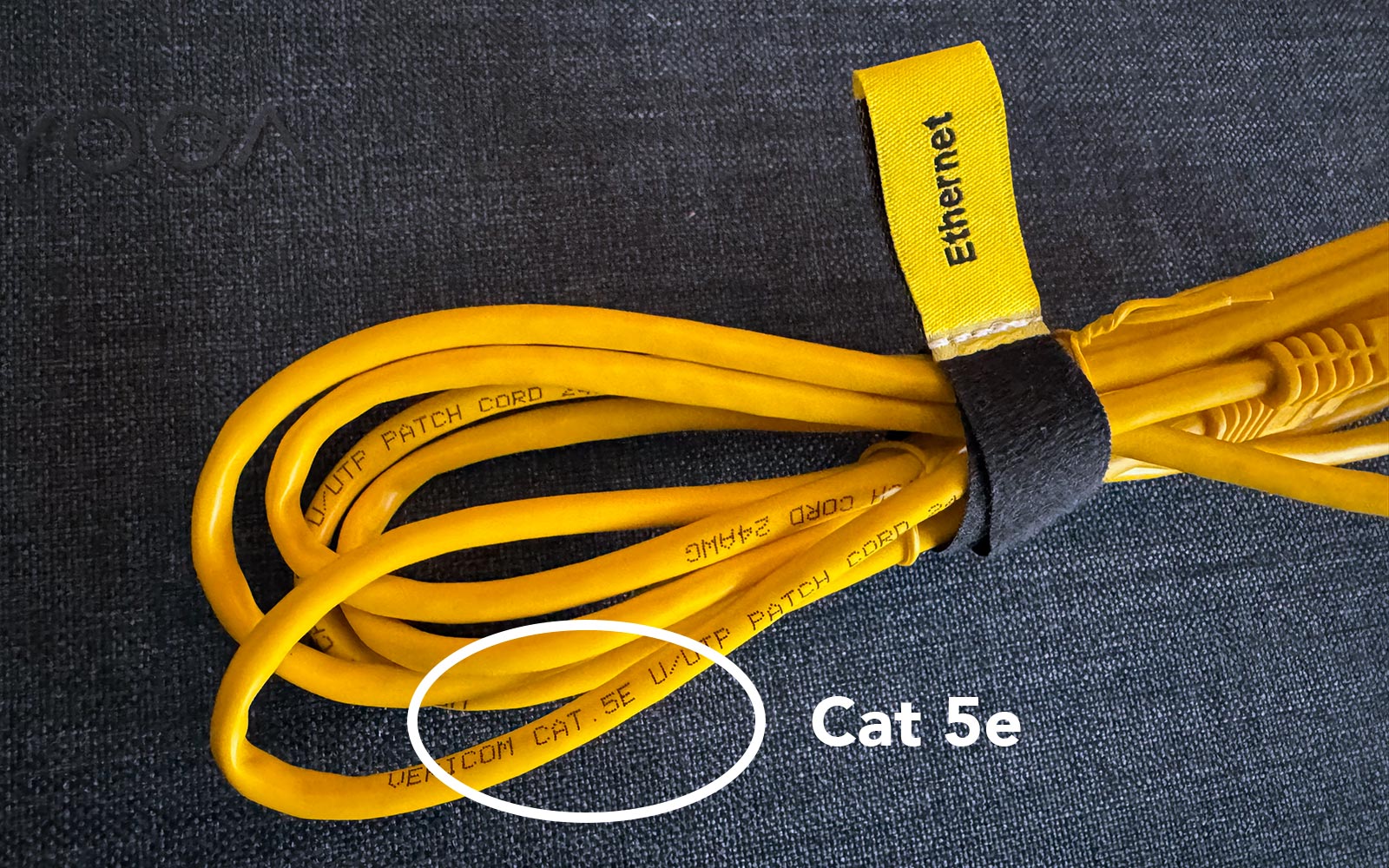Check the Speed of Your Ethernet Cable
June 2025 — Tip of the Month
Last month, I made a case for using a wired connection instead of a wireless one. But with Wi-Fi speeds rivaling their wired counterparts, a wireless connection could be faster than wired — especially if you have an old Ethernet cable.
Whenever you connect a device via Ethernet, make sure to look at the cable to verify the transfer speed. The Ethernet specification, which is usually printed on it, should be at least "Cat 5e," or better yet, "Cat6" or greater.

If the cable says "Cat 5" (not Cat 5e), you may be limited to 100 Mbps, or 12.5 megabytes per second. Cat 5e supports 1,000 Mbps (1 Gbps), which, as of 2025, is faster than most wireless connections. Cat6 supports 10 Gbps data transfer rates. If you have Gigabit Internet from your ISP, you should use at least a Cat6 cable since you may able to get speeds above 1 Gbps, or even 2 Gbps.
Your maximum transfer speed will be the lowest common denominator of your devices. If your computer has a 100Base-T NIC), you can only transfer data up to 100 Mbps, regardless of what cable you use. Similarly, if you connect to a 1000Base-T router, you'll max out at 1 Gbps, regardless of the cable.
Ethernet cables are relatively cheap, and Cat6, Cat7, and Cat8 cables are widely available. So don't let a cheap cable be the reason your network is slow.
 Home
Home May 2025
May 2025